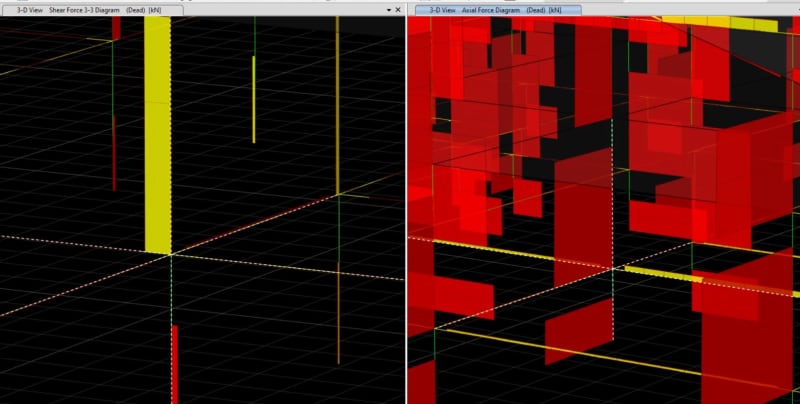minx_kutor
Structural
- Oct 15, 2023
- 9
I have a joint where 4 beams and 2 columns meet, this is a plinth level member without any floor. All of the are fixed with no releases. Intuitively one would assume that the shear in the column above would completely get transferred to the column below, however I see that a portion of the shear is going into the beam as tension?
The image to the left shows how the shear forces is transferred out such that the shear force sign itself changes.
I ran an iteration of the model with moment releases for the beams and I seeing the same behavior.
This is only happening in this level where there is no diaphragm, but the above floors where there is diaphragm this issue doesnt exist. Why is this happening? How do I avoid this?
Happy to provide the ETABS model.

The image to the left shows how the shear forces is transferred out such that the shear force sign itself changes.
I ran an iteration of the model with moment releases for the beams and I seeing the same behavior.
This is only happening in this level where there is no diaphragm, but the above floors where there is diaphragm this issue doesnt exist. Why is this happening? How do I avoid this?
Happy to provide the ETABS model.

